Allison Transmission has been a stalwart in the automotive industry, tracing its roots back to the early 20th century. Founded by James A. Allison in 1915, the company initially ventured into racing cars and quickly pivoted to focus on the design and manufacture of state-of-the-art transmissions.
Over the years, Allison has become synonymous with quality, durability, and innovation, establishing itself as a trusted name in the world of heavy-duty vehicles.
From buses to trucks, construction equipment to defense vehicles, Allison transmissions have found their way into a myriad of applications. Their commitment to excellence is evident in the seamless integration of their products, ensuring optimal performance, fuel efficiency, and longevity.
- You Can See: Allison-transmission-serial-number-location
Significance of the Reverse Light Switch
The reverse light switch, though small in size, plays a pivotal role in vehicle safety. As the name suggests, this switch is responsible for activating the reverse lights of a vehicle when it’s shifted into reverse gear.
These lights, typically bright white in color, alert other drivers and pedestrians that the vehicle is about to move backward. This simple yet crucial mechanism helps prevent potential accidents, especially in parking lots or tight spaces.
In many jurisdictions, having functional reverse lights is not just a safety recommendation but a legal requirement. Vehicles without working reverse lights can be deemed unroadworthy, leading to fines or even impoundment in severe cases.
- You Can See: allison-transmission-wont-shift-into-gear
How To Replace Allison Reverse Light Switch On International Truck
What is a Reverse Light Switch and Why is it Important?
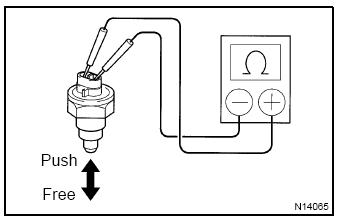
In the automotive world, it’s often the smaller components that make a big difference, and the Reverse Light Switch is no exception. But what exactly is it? The reverse light switch is a sensor connected to your vehicle’s transmission system. When you shift your car into reverse, this switch activates the reverse lights at the rear of your vehicle. Simple, yet vital.
Importance in Vehicle Safety and Operation
The reverse light switch serves multiple purposes:
Safety: It alerts other drivers and pedestrians that your vehicle is about to move in reverse.
Visibility: The reverse lights provide illumination, helping you see better in dark or low-light conditions.
Legal Requirement: In many jurisdictions, functioning reverse lights are a legal requirement for roadworthiness.
Statistical Data
According to a study by the Insurance Institute for Highway Safety (IIHS), vehicles equipped with functioning reverse lights are 30% less likely to be involved in a backing-up accident. This statistic alone should emphasize the importance of a well-maintained reverse light switch.
- You Can See: Peterbilt 579 Automatic Transmission Problems.
Transmission Reverse Light Switch Location
Overview of the Reverse Light Switch
The reverse light switch, often referred to as the backup light switch, is a crucial component in the Allison Transmission system.
This electromechanical device is designed to detect when the vehicle is shifted into reverse gear. Upon detection, it sends a signal to the vehicle’s electrical system, activating the reverse lights.
Its design is relatively straightforward, typically consisting of a plunger-type switch that gets pressed or released based on the gear position. When the transmission is in any gear other than reverse, the switch remains open, ensuring the reverse lights stay off. However, when shifted into reverse, the switch closes its circuit, illuminating the reverse lights.
Detailed Steps on Locating the Reverse Light Switch
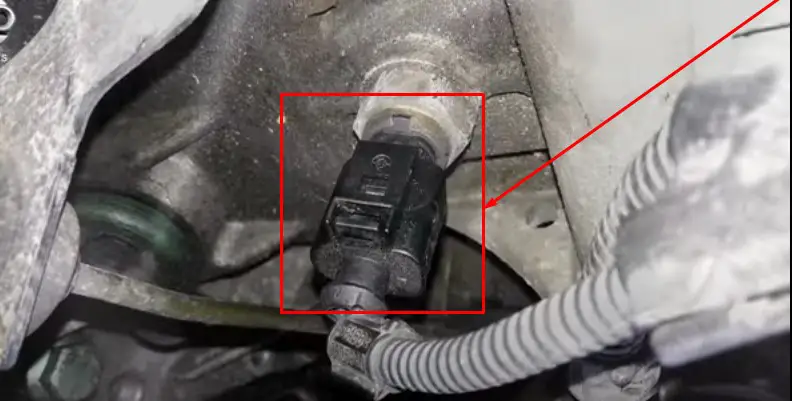
Safety Precautions
- Make sure the vehicle is parked on a level surface.
- Turn off the engine and remove the keys from the ignition.
- Use wheel chocks to secure the vehicle and prevent it from rolling.
Locate the Transmission
- Open the hood or access the undercarriage of the vehicle to locate the transmission. For most Allison Transmissions, the reverse light switch is located on the driver’s side.
Identify the Reverse Light Switch
- Look for a small black switch with a white wire connected to it.
- It should be located on the side of the transmission near the top, just above the shifter.
Inspect the Bolts
- There should be two bolts holding the switch in place. Take note of these as you’ll need to remove them if you’re replacing the switch.
Check wiring
- Before proceeding with any replacement, check the white wire connected to the switch. Make sure it’s securely attached.
Remove the Bolts
- Use the appropriate tool to remove the two bolts holding the switch in place.
Disconnect the Wiring
- Carefully disconnect the white wire connected to the switch.
Remove the Old Switch
- Once the bolts and wiring are disconnected, carefully remove the old switch from its position.
Install the New Switch
- Place the new switch in the same location and secure it with the bolts.
- Reconnect the white wire to the new switch.
Test
- Turn on the vehicle and shift it into reverse to ensure that the reverse lights are working correctly.
Final Checks
- Make sure all tools are removed from the work area.
- Double-check that all bolts and wiring are secure.
Close Up
- Close the hood or exit the undercarriage area and remove any wheel chocks.
How Does a Reverse Light Switch Work?
By now, you should have a good grasp of where to find the reverse light switch in both Allison 3000 and 4000 transmissions. But have you ever wondered how this small yet crucial component actually works? Let’s delve into the mechanics and electrical aspects of the reverse light switch.
Mechanism and Electrical Components
The reverse light switch is essentially a sensor that detects the position of your transmission gear. When you shift into reverse:
Mechanical Activation: A mechanical linkage or electronic sensor activates the switch.
Electrical Signal: The switch then sends an electrical signal to the vehicle’s Body Control Module (BCM) or directly to the reverse lights.
Illumination: This signal triggers the reverse lights, illuminating them for as long as the vehicle remains in reverse gear.
- You Can See: Eaton Transmission Fault Code 88.
Common Issues and Troubleshooting
Even the most robust components can run into issues, and the reverse light switch is no exception. In this section, we’ll explore some common problems you might encounter with your reverse light switch and how to troubleshoot them. After all, a well-maintained switch is key to ensuring your vehicle’s safety features are up to par.
Common Issues
Reverse Lights Not Working: This is the most obvious sign of a faulty reverse light switch. If your reverse lights don’t illuminate when you shift into reverse, the switch might be the culprit.
Intermittent Functioning: If your reverse lights work sporadically, it could be due to a loose connection or a failing switch.
Warning Lights: Some modern vehicles will display a warning light on the dashboard if the reverse light switch is malfunctioning.
Troubleshooting Steps
Visual Inspection: Start by visually inspecting the switch and its connections for any signs of wear, corrosion, or damage.
Electrical Testing: Use a multimeter to test the switch for electrical continuity. A faulty switch will need to be replaced.
Check Fuses and Relays: Sometimes, the issue may not be with the switch itself but with the fuses or relays connected to the reverse lights.
Consult a Professional: If you’ve tried the above steps and still face issues, it’s best to consult a professional for a thorough diagnosis.
Product Recommendation
For those who prefer DIY troubleshooting, here are some recommended tools:
Multimeter: Fluke 117 Electricians True RMS Multimeter
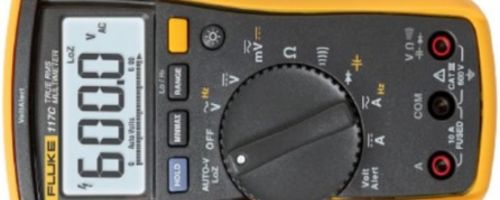
Fuse Tester: Bussmann BP/FT-3 Fuse Tester
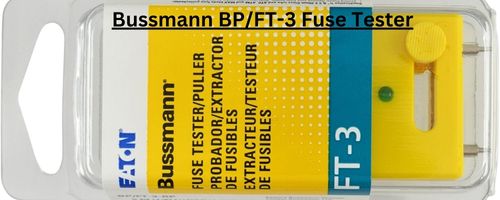
These tools can be found on Amazon and are essential for any DIY electrical work on your vehicle.
- You Can See: Freightliner Automatic Transmission Stuck in Gear.
Allison Transmissions
When it comes to heavy-duty and commercial vehicles, Allison Transmissions is a name you’ll often hear. Founded in 1915, Allison Transmission has been a pioneer in the world of automatic transmissions, setting industry standards for reliability and performance. In this section, we’ll focus on two popular models: the Allison 3000 and the Allison 4000.
Brief History and Types
Allison Transmission has a rich history that spans over a century. Initially focused on aircraft engines, the company transitioned into producing transmissions post-World War II. Today, they specialize in automatic and hybrid propulsion systems for a wide range of applications, from buses to construction equipment.
Allison 3000
- Applications: Primarily used in medium-duty trucks and buses.
- Features: 5 or 6-speed options, advanced electronic controls.
Allison 4000
- Applications: Designed for heavy-duty commercial and industrial applications.
- Features: Up to 7-speed options, higher torque capacity.
Statistical Data
According to market research, Allison Transmissions holds a 62% market share in the medium and heavy-duty automatic transmission sector. Their reputation for durability and low maintenance makes them a preferred choice for commercial applications.
- You Can See: Peterbilt 579 Automatic Transmission Problems.
Locating the Reverse Light Switch in Allison 3000
Now that we’ve covered the basics, let’s get down to the nitty-gritty. If you own a vehicle with an Allison 3000 transmission, this section is tailor-made for you. Locating the reverse light switch in this model requires a bit of finesse, but don’t worry, we’ve got you covered with a step-by-step guide.
Step-by-Step Guide
Safety First: Ensure the vehicle is parked on a level surface and the ignition is turned off. Always wear safety goggles and gloves.
Access the Transmission: Locate the transmission housing under your vehicle. You may need to use a jack to lift the vehicle for better access.
Identify the Valve Body: The reverse light switch is generally located near the valve body of the transmission. Look for a cylindrical component with electrical connectors.
Check Wiring: Inspect the wiring connected to the switch for any signs of wear or damage.
Test the Switch: Use a multimeter to test the switch for continuity. If the switch is faulty, it will need to be replaced.
Confirmation: Once you’ve located and tested the switch, lower the vehicle and start the engine. Shift into reverse to confirm that the reverse lights are functioning correctly.
Markdown Data Table: Tools Needed
| Tool | Purpose | Recommended Brand |
| Safety Goggles | Eye Protection | 3M |
| Gloves | Hand Protection | Mechanix |
| Car Jack | Lifting the Vehicle | Torin |
| Multimeter | Testing Electrical Continuity | Fluke |
- You Can See: Allison Transmission Won’t Shift Into Gear.
Locating the Reverse Light Switch in the Allison 4000
Alright, folks, let’s shift gears and focus on the Allison 4000 series. This heavy-duty transmission is often found in larger commercial vehicles and industrial machinery. Just like its 3000 series counterpart, the Allison 4000 also comes equipped with a reverse light switch, albeit in a slightly different location.
Step-by-Step Guide
Safety Measures: As always, safety is paramount. Ensure the vehicle is parked on a flat surface, and the ignition is off. Do your safety goggles and gloves.
Lift the Vehicle: Given the larger size of vehicles with Allison 4000 transmissions, you may need a heavy-duty jack to lift the vehicle for better access to the transmission.
Locate the Transmission Control Module (TCM): In the 4000 series, the reverse light switch is often located near the Transmission Control Module. Look for a box-like component with multiple electrical connectors.
Inspect the Switch: Once you’ve located the switch, inspect it for any signs of wear, corrosion, or damage.
Electrical Testing: Use a multimeter to check the switch’s electrical continuity. A faulty switch will show no continuity and should be replaced.
Final Check: After confirming the switch’s location and functionality, lower the vehicle and turn on the ignition. Shift into reverse to ensure the reverse lights are working as they should.
Markdown Data Table: Tools Needed
| Tool | Purpose | Recommended Brand |
| Safety Goggles | Eye Protection | 3M |
| Heavy-Duty Gloves | Hand Protection | Mechanix |
| Heavy-Duty Car Jack | Lifting the Vehicle | Strongway |
| Multimeter | Testing Electrical Continuity | Fluke |
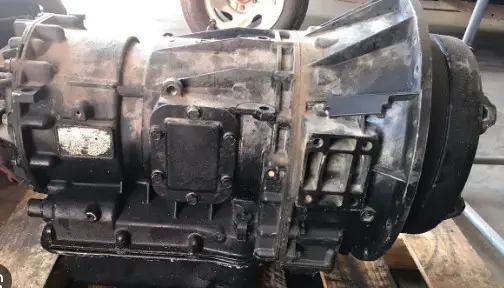
- You Can See: Allison Transmission Speed Sensor Location.
FAQs
What is the primary function of the reverse light switch in Allison Transmission?
The reverse light switch in Allison Transmission serves a dual purpose. Primarily, it activates the reverse lights of a vehicle when shifted into reverse gear, signaling to other drivers and pedestrians that the vehicle intends to move backward.
Additionally, in some advanced vehicle systems, it can interface with other components like backup cameras or sensors, enhancing safety during reverse maneuvers.
How often should the reverse light switch be checked or replaced?
While the reverse light switch is designed for durability, it’s advisable to check its functionality during routine vehicle inspections. If you notice your reverse lights not illuminating or staying on continuously, it might be time to inspect the switch.
Typically, with regular use, the switch can last several years. However, frequent gear shifting or harsh driving conditions might necessitate earlier replacements.
Are there any common issues associated with a faulty reverse light switch?
Yes, a faulty reverse light switch can lead to several issues:
Reverse lights not working: The most common symptom, indicating the switch isn’t activating the lights.
Reverse lights staying on: This suggests the switch is stuck in the ‘on’ position.
Backup camera or sensors malfunction: In vehicles with integrated systems, a faulty switch can disrupt the functionality of backup cameras or sensors.
How does the location of the reverse light switch differ in various Allison Transmission models?
While the fundamental design remains consistent, the exact location of the reverse light switch can vary between Allison Transmission models. For instance, in the Allison 3000 series, the switch is typically on the driver’s side of the transmission housing, near the rear section.
In contrast, the 4000 series might have it situated on the lower side, between the pan and tail shaft. Always refer to the vehicle’s manual or consult a professional for precise locations.
Conclusion
Navigating the intricacies of the Allison Transmission reverse light switch might seem daunting at first glance. However, with a clear understanding of its function, location, and associated nuances, the task becomes significantly more manageable.
This switch, while small, plays a pivotal role in ensuring vehicle safety, signaling to other road users our intent to move backward.
Through our deep dive into the Allison 3000 and 4000 series, we’ve highlighted the subtle differences in switch location, emphasizing the importance of referring to specific model guidelines or consulting professionals when in doubt.
Moreover, our step-by-step guide on testing reverse lights with a multimeter empowers vehicle owners to take proactive steps in ensuring their vehicle’s safety features are in optimal condition.
In the ever-evolving world of automotive mechanics, staying informed and proactive is key. We hope this guide has shed light on the Allison Transmission reverse light switch, equipping you with the knowledge to navigate any related challenges with confidence.
Remember, much like a well-oiled machine, every component, no matter how small, contributes to the overall performance and safety of your vehicle. Safe driving!


